#jim crow laws
Text
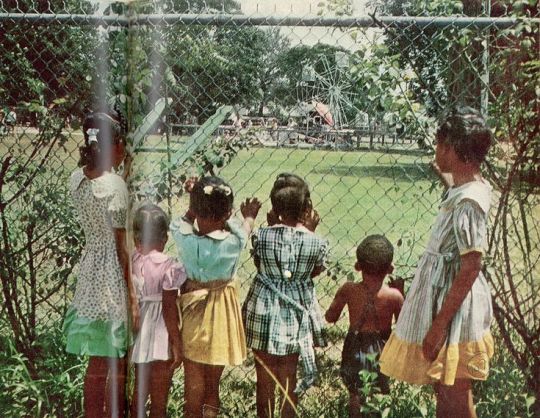
Black Children at the Fence of a Segregated Park, 1960s
#black history#segregation#jim crow#jim crow laws#civil rights movement#1960s#heartbreaking#vintage photo#vintage photography#powerful photography
21 notes
·
View notes
Text

Southern States Push Anti-Gay Jim Crow Laws
12 notes
·
View notes
Text
Schools do a poor job of teaching about America’s legacy of white supremacy, according to a scholar who researches racial discrimination.
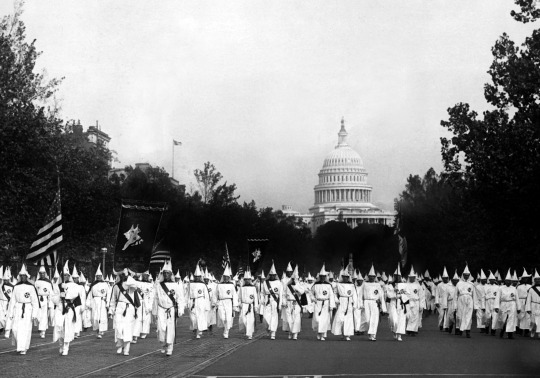
A Ku Klux Klan parade in Washington, D.C., in 1926
When it comes to how deeply embedded racism is in American society, blacks and whites have sharply different views.
For instance, 70 percent of whites believe that individual discrimination is a bigger problem than discrimination built into the nation’s laws and institutions. Only 48 percent of blacks believe that is true.
Many blacks and whites also fail to see eye to eye regarding the use of blackface, which dominated the news cycle during the early part of 2019 due to a series of scandals that involve the highest elected leaders in Virginia, where I teach.
The donning of blackface happens throughout the country, particularly on college campuses. Recent polls indicate that 42 percent of white American adults either think blackface is acceptable or are uncertain as to whether it is.
One of the most recent blackface scandals has involved Virginia Gov. Ralph Northam, whose yearbook page from medical school features someone in blackface standing alongside another person dressed in a Ku Klux Klan robe. Northam has denied being either person. The more Northam has tried to defend his past actions, the clearer it has become to me how little he appears to know about fundamental aspects of American history, such as slavery. For instance, Northam referred to Virginia’s earliest slaves as “indentured servants”. His ignorance has led to greater scrutiny of how he managed to ascend to the highest leadership position in a racially diverse state with such a profound history of racism and white supremacy.
Ignorance is Pervasive
The reality is Gov. Northam is not alone. Most Americans are largely uninformed of our nation’s history of white supremacy and racial terror.
As a scholar who researches racial discrimination, I believe much of this ignorance is due to negligence in our education system. For example, a recent study found that only 8 percent of high school seniors knew that slavery was the central cause of the Civil War. There are ample opportunities to include much more about white supremacy, racial discrimination and racial violence into school curricula. Here are three things that I believe should be incorporated into all social studies curricula today:
1. The Civil War was fought over slavery and one of its offshoots – the convict-lease system – did not end until the 1940s.
The Civil War was fought over the South’s desire to maintain the institution of slavery in order to continue to profit from it. It is not possible to separate the Confederacy from a pro-slavery agenda and curriculums across the nation must be clear about this fact.
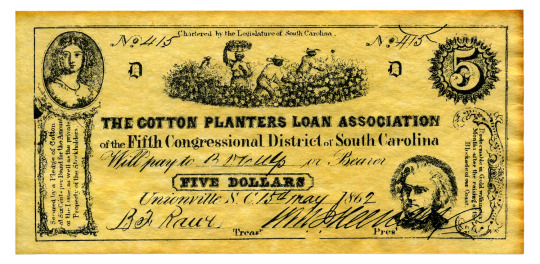
A Confederate treasury note from the Civil War Era shows how reliant the South’s economy was on slave labor. Photo from Scott Rothstein / www.shutterstock.com.
After the end of the Civil War, southern whites sought to keep slavery through other means. Following a brief post-Civil War period known as Reconstruction, white southerners created new laws that gave them legal authority to arrest blacks over the most minor offenses, such as not being able to prove they had a job.
While imprisoned under these laws, blacks were then leased to corporations and farms where they were forced to work without pay under extremely harsh conditions. This “convict leasing” was, as many have argued, slavery by another name and it persisted until the 1940s.
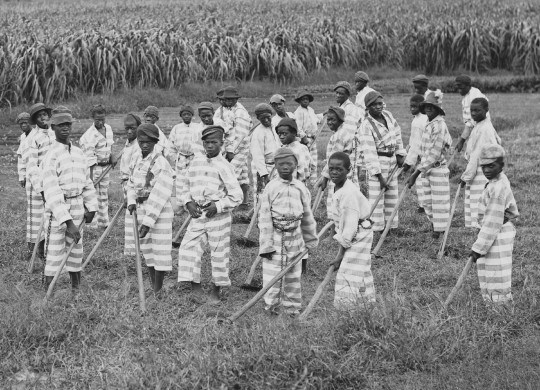
Southern jails made money leasing convicts for forced labor in the Jim Crow South. Circa 1903. Photo from Everett Historical / www.shutterstock.com.
2. The Jim Crow era was violent.
While students may be taught about segregation and laws preventing blacks from voting, they often are not taught about the extreme violence whites enacted upon blacks throughout the Jim Crow era, which took place from 1877 through the 1950s. Mob violence and lynchings were frequent occurrences – and not just in the South – throughout the Jim Crow era.
Racial terror was used as a means for whites to maintain power and prevent blacks from gaining equality. Notably, many whites – not just white supremacist groups like the Klu Klux Klan – engaged in this violence. Moreover, the torture and murder of blacks was not associated with any consequences.
During this same time, white society created negative stereotypes about blacks as a way to dehumanize blacks and justify the violence whites enacted upon them. These negative stereotypes included that blacks were ignorant, lazy, cowardly, criminal and hypersexual.
Blackface minstrelsy refers to whites darkening their skin and dressing in tattered clothing to perform the negative stereotypes as part of entertainment. This imagery and entertainment served to solidify negative stereotypes about blacks in society. Many of these negative stereotypes persist today.
3. Racial inequality was preserved through housing discrimination and segregation.
During the early 1900s, a number of policies were put into place in our country’s most important institutions to further segregate and oppress blacks. For example, in the 1930s, the federal government, banks and the real estate industry worked together to prevent blacks from becoming homeowners and to create racially segregated neighborhoods.
This process, known as redlining, served to concentrate whites in middle-class suburbs and blacks in impoverished urban centers. Racial segregation in housing has consequences for everything from education to employment. Moreover, because public school funding relies so heavily on local taxes, housing segregation affects the quality of schools students attend.
All of this means that even after the removal of discriminatory housing policies and school segregation laws in the 1950s and 1960s, the consequences of this intentional segregation in housing persist in the form of highly segregated and unequal schools. All students should learn this history to ensure that they do not wrongly conclude that current racial disparities are based on individual shortcomings – or worse, black inferiority – as opposed to systematic oppression.
Americans live in a starkly unequal society where health and economic outcomes are largely influenced by race. We cannot begin to meaningfully address this inequality as a society if we do not properly understand its origins. The white supremacists responsible for sanitizing our history lessons understood this. Their intent was clearly to keep the country ignorant of its racist past in order to stymie racial equality. To change the tide, we must incorporate a more accurate depiction of our country’s racist history in our K-12 curricula.
#3 Things Schools Should Teach About America’s History of White Supremacy#white supremacy#american hate#american white supremacy#education#white lies#white history of hate#homegrown supremacy#systemic racism#convict leasing#13th amendment#vagrancy laws#racism in american systems#systemic oppression#Jim Crow#Jim Crow Laws#Black Codes
14 notes
·
View notes
Text
DC Amazon Week: Culture differences
This is a entry for @dccomicsamazonsweek event DC Amazon Week 2024 day 2: Culture Shock. Since February is Black History Month here in the United States, I imagined a story of Nubia in the Southern United States during the Jim Crow segregation laws era.
Nubia arrived at the United States of America, the country in Man's World whose ideas of freedom for all seem like the prefect place to set up a assembly of Themyscira. As she look around, some citizens take note of her clothes, even as she show her shoulders and she is troubled by their angry eyes.
As she walk into town, Nubia see a restaurant and decide to try some of the local food. Just as Nubia enter the restaurant, many of its customers were shocked at her and the owner yell at Nubia, "Hey! No blacks in my restaurant!" and Nubia were shocked by his loud voice that she end up running out of the town.
As Nubia sit in the park, she wonder about what was wrong with the men of this country, mostly its white citizens. As Nubia think, a black man walk up to her and ask, "Pardon me miss, but you should not be her long." and Nubia said to the man, "I'm sorry, sir. I didn't expected people to not like me." The black man reply, "It was only the color of your skin, miss. You see, this country was made by white folks and they made laws to keep folks of color like me away from their power. There are those whose wanted to make a change but don't want to face those whose disagree with them." and Nubia was shocked at hearing this as she didn't excepted a culture to be different than the culture of Themyscira where there are not laws based on race.
4 notes
·
View notes
Text

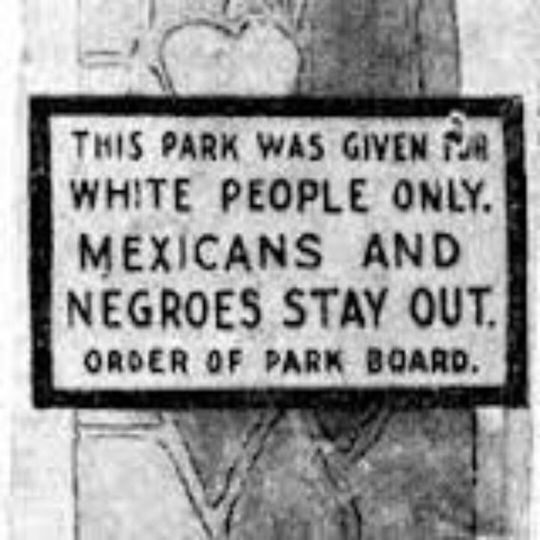


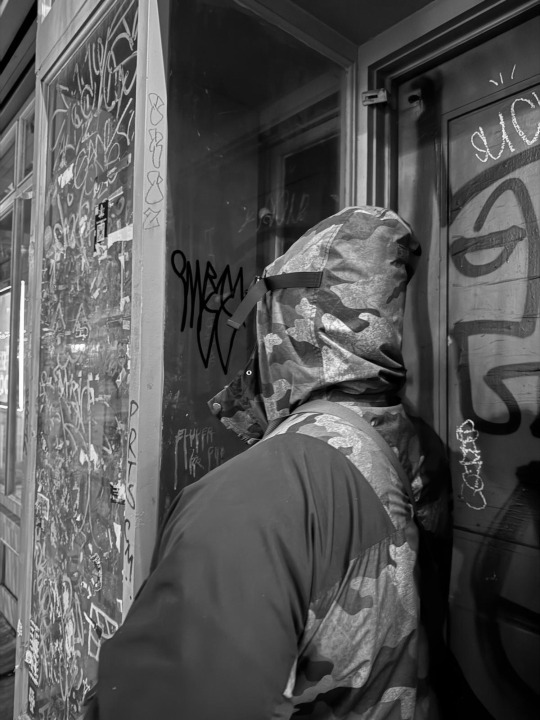
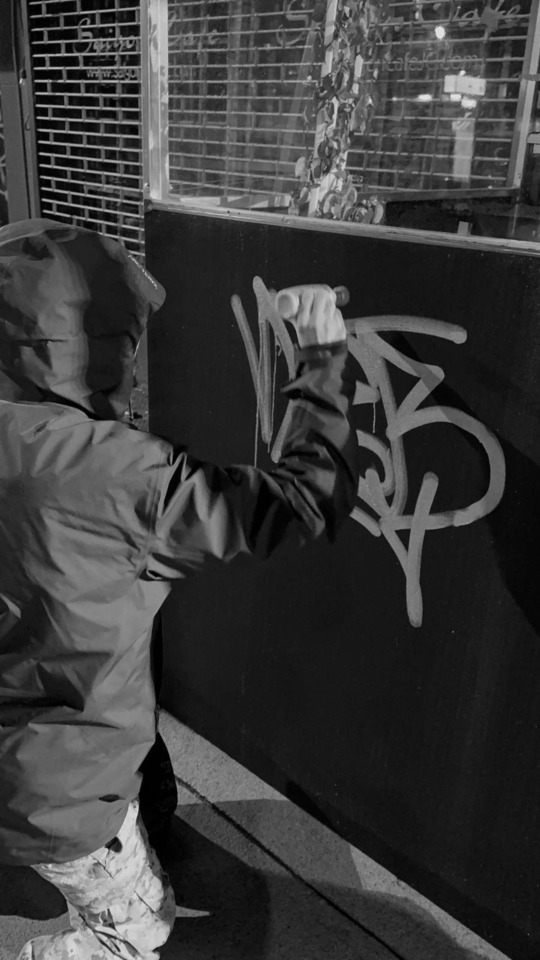
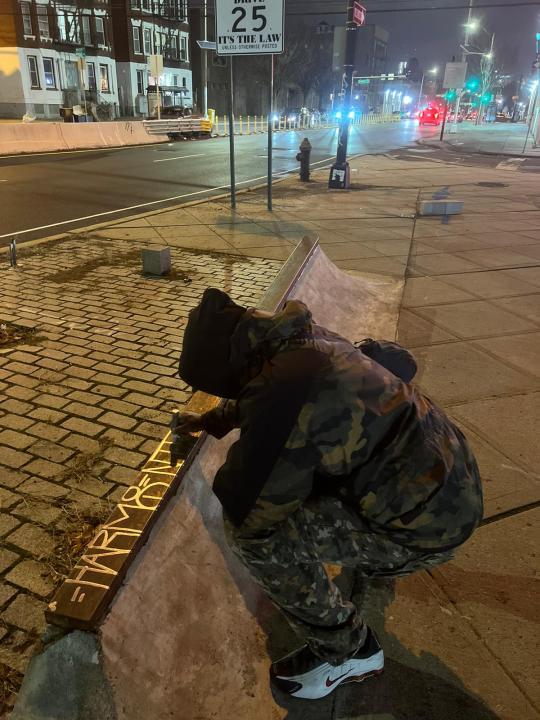
KULTURE..............
#ARCTERYX#GRAFFPORN#NTER#NORTHFACE#HARM8#NYC#GRAFFITI#JERSEYCITY#UNDERGROUND#HIEROGLYPHICS#BASED#BASEGOD#BASEDGOD#BASED EDIT#GRAFF#JIM CROW LAWS
2 notes
·
View notes
Text
Economist Lisa Cook Confirmed to Federal Reserve Board, 1st Black Woman Governor in Agency's 108-Year History
Economist Lisa Cook Confirmed to Federal Reserve Board, 1st Black Woman Governor in Agency’s 108-Year History
According to washingtonpost.com, economist Lisa Cook was confirmed today to serve on the Federal Reserve Board.
She is the first Black woman to help oversee the nation’s central bank as it works to stabilize financial recovery in the United States.
To quote from washingtonpost.com:
Cook was confirmed by a 51-to-50 vote in the Senate, with Vice President Harris casting the tiebreaking vote.
No…

View On WordPress
#Federal Reserve Board#Jim Crow laws#Lisa Cook#Michigan State University#National Bureau of Economic Research#University of Michigan#Vice President Harris#White House’s Council of Economic Advisers
85 notes
·
View notes
Text
welcome to america
we have… reconsidering the jim crow law in mississippi, 200+ anti trans bills, cishet men making decisions for people with vaginas, and crappy gun laws that get innocent people killed anywhere and everywhere.
#welcome to america#the shitshow we call a great country#america#jim crow#jim crow laws#mississippi#transgender#trans#roe v wade#gun laws
17 notes
·
View notes
Text
New Post has been published on Books by Caroline Miller
New Post has been published on https://www.booksbycarolinemiller.com/musings/all-ye-need-to-know/
All Ye Need To Know
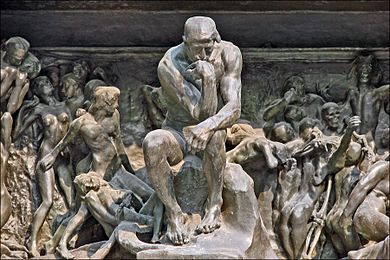
Retired scientist Ronald Mallett continues to work on the possibility of time travel. Like Albert Einstein, he believes time and space are interconnected. That’s why he is tinkering with technology that will allow him to bend time as if it were in a black hole. Despite this seemingly hopeless pursuit, he invites us to imagine the possibilities that could occur if he succeeds. Covid-19 could have been stopped in its tracks if we’d been able to carry a vaccine into the past. Mallett says nothing about negative consequences that could arise when we fiddle with history. An ill-fated adjustment might recreate the Mesozoic Era. True, some people make a habit of looking backward. Mississippi’s legislature is nostalgic enough to resurrect the separate but equal Jim Crow laws of the 1800s. Unfortunately, in their bid to defend state rights, they forgot about human ones. Knowing little of ourselves, substituting the past for the present takes us into a tulgey wood of thorns and bogs. Writers from William Saroyan to Honoré de Balzac see our misadventure as the Human Comedy. By the phrase, they mean that ignorance gives birth to countless absurdities. These literary giants have spent many a candle-lit night in pursuit of them. The result has been an endless series of written comedies and tragedies. If vanity could learn from genius, we might survive…perhaps even grow wise from the exposure. But imagination isn’t the sole purview of brilliance. Lesser minds employ it, roo. How else could QAnon exist? Belief is awkward to confront because it is impervious to evidence. If I prefer strawberry ice cream to pistachio, the question of accuracy doesn’t apply. Ambiguity, of course, is part of the human condition. Quantum physics informs us that truth is relative. Reality lies at the intersection of matter and the observer. Any ignorance we carry en route alters what we perceive. Just as a black hole bends time and space, so black holes of the mind bend reality. Lauren Boubert, a Republican member of Congress, provides an example. She has submitted a tax proposal to Congress based on her notion of geography. Since her knowledge of our country is limited to the continental United States, she leaves out Alaska and Hawaii. If her bill succeeds, these two states would have to fend for themselves. Or, they could form a separate but equal union which Mississippi might envy. Equally unburdened by evidence, a drag queen astounded 11-year-olds at an elementary school with the announcement that many genders exist. Seventy-three to be precise. With a little imagination, more be possible. The number has been growing. President Barrack Obama created the opportunity for these endless possibilities. Executive Order 13672 was his attempt to end lifestyle discrimination at the federal level. The impression the document left was that gender was a state of mind. A Facebook friend warned I was dipping my toe into troubled waters when I wrote a blog about Executive Order 13572. But how could I ignore it? I’m an English teacher. When I hear plural pronouns used in the singular, I bristle. Yet as an English teacher, I also know that language changes. The MLA Style Center, that arbiter of modern usage, already prods me in the direction of a new “they.”…Jules is writing their research paper on Jane Austen’s Persuasion; Ari read the instructions to themselves [or themself] before beginning the test. Unfortunately, no one has alerted Grammarly about the change. K. Rowling stumbled into the gender crisis without the benefit of a friendly warning. Not one to mock different lifestyles, she uttered remarks meant to defend women’s rights. But, we all know where the road of good intentions leads. Harpies soon descended and claiming the high ground, they called for a boycott of her latest video game, though it, like many of her enterprises, provides the lifeblood of numerous charities. J. K. Rowling needn’t have worried. Isle Bryson made her point for her. Faced with an 8-year jail sentence, “they” claimed to be a transgender female, and at “they’s” request, “they” was sent to a woman’s prison. No sooner had “they” donned a uniform of one shade of gray, than “they” proceeded to rape two fellow inmates. Rowling’s video game, as it happens, suffered no similar harm. Hogwart’s Legacy game enjoyed record sales. In this Barnum and Bailey world, a little humility doesn’t go amiss. As homo sapiens, we are no more in control of our lives or the environment than earth’s smallest creatures. We may shrug with indifference at an ant war unfolding beneath our feet, yet we fail to consider that Nature may take the same view of us and our endless wars. Like Lauren Boubart, Nature shows a wanton ignorance of geography. We’d do better to ponder our place in the universe than spend time making up rules that discriminate. If a child born as a girl wants to be a boy, I doubt the moon will fall out of the sky for that ambition. If we are honest, controlling someone’s inner life is more difficult than controlling the outer one. How can we take charge of anything when we are blind to events that will occur over the next 30 seconds? Some of us avoid the terror of a random cosmos by placing our faith in a god or gods. I, too, feel the impulse. Nonetheless, when studies show that prayer is no more successful than a coin toss, I’m disinclined to take a leap of faith. Should I be wrong in my irreligious leanings and one day find myself in the presence of a celestial being, I’m certain to be struck with another conundrum. Shall I refer to this deity as “he,” “she,” or “they”?
#they" as a singular pronoun#73 genders#Albert Einstein#Barrack Obama#bending time and space#black holes#Executive Order 13572#Grammarly#Hogwart's Legacy#Honoré de Balzac#J. K. Rowling#Jim Crow laws#Lauren Boubert#MLA Style Center#power of prayer#quantum physics#Ronald Mallett#The Human Comedy#time travel#William Sarioyan
9 notes
·
View notes
Text
Six Triple Eight: The Battalion of Black Women Erased From History
www.bbc.com/news/uk-england-birmingham-66045635
View On WordPress
#African/Black experience#Afrikan#Battalion of Black Women Erased From History#culture#Jim Crow Laws#liberation#racism#U.S. Army#war#War on Afrikans#WWII
0 notes
Text
Late one night several years ago, I got out of my car on a dark midtown Atlanta street when a man standing fifteen feet away pointed a gun at me and threatened to “blow my head off.” I’d been parked outside my new apartment in a racially mixed but mostly white neighborhood that I didn’t consider a high-crime area. As the man repeated the threat, I suppressed my first instinct to run and fearfully raised my hands in helpless submission. I begged the man not to shoot me, repeating over and over again, “It’s all right, it’s okay.”
The man was a uniformed police officer. As a criminal defense attorney, I knew that my survival required careful, strategic thinking. I had to stay calm. I’d just returned home from my law office in a car filled with legal papers, but I knew the officer holding the gun had not stopped me because he thought I was a young professional. Since I was a young, bearded black man dressed casually in jeans, most people would not assume I was a lawyer with a Harvard Law School degree. To the officer threatening to shoot me I looked like someone dangerous and guilty.
I had been sitting in my beat-up Honda Civic for over a quarter of an hour listening to music that could not be heard outside the vehicle. There was a Sly and the Family Stone retrospective playing on a local radio station that had so engaged me I couldn’t turn the radio off. It had been a long day at work. A neighbor must have been alarmed by the sight of a black man sitting in his car and called the police. My getting out of my car to explain to the police officer that this was my home and nothing criminal was taking place prompted him to pull his weapon.
Having drawn his weapon, the officer and his partner justified their threat of lethal force by dramatizing their fears and suspicions about me. They threw me on the back of my car, searched it illegally, and kept me on the street for fifteen humiliating minutes while neighbors gathered to view the dangerous criminal in their midst. When no crime was discovered and nothing incriminating turned up in a computerized background check on me, I was told by the two officers to consider myself lucky. While this was said as a taunt, they were right: I was lucky.
People of color in the United States, particularly young black men, are often assumed to be guilty and dangerous. In too many situations, black men are considered offenders incapable of being victims themselves. As a consequence of this country’s failure to address effectively its legacy of racial inequality, this presumption of guilt and the history that created it have significantly shaped every institution in American society, especially our criminal justice system.
At the Civil War’s end, black autonomy expanded but white supremacy remained deeply rooted. States began to look to the criminal justice system to construct policies and strategies to maintain the subordination of African-Americans. Convict leasing, the practice of “selling” the labor of state and local prisoners to private interests for state profit, used the criminal justice system to take away their political rights. State legislatures passed the Black Codes, which created new criminal offenses such as “vagrancy” and “loitering” and led to the mass arrest of black people. Then, relying on language in the Thirteenth Amendment that prohibits slavery and involuntary servitude “except as punishment for crime,” lawmakers authorized white-controlled governments to exploit the labor of African-Americans in private lease contracts or on state-owned farms.1 The legal scholar Jennifer Rae Taylor has observed:
While a black prisoner was a rarity during the slavery era (when slave masters were individually empowered to administer “discipline” to their human property), the solution to the free black population had become criminalization. In turn, the most common fate facing black convicts was to be sold into forced labor for the profit of the state.
Beginning as early as 1866 in states like Texas, Mississippi, and Georgia, convict leasing spread throughout the South and continued through the late nineteenth and early twentieth centuries. Leased black convicts faced deplorable, unsafe working conditions and brutal violence when they attempted to resist or escape bondage. An 1887 report by the Hinds County, Mississippi, grand jury recorded that six months after 204 convicts were leased to a man named McDonald, twenty were dead, nineteen had escaped, and twenty-three had been returned to the penitentiary disabled, ill, and near death. The penitentiary hospital was filled with sick and dying black men whose bodies bore “marks of the most inhuman and brutal treatment…so poor and emaciated that their bones almost come through the skin.”2
The explicit use of race to codify different kinds of offenses and punishments was challenged as unconstitutional, and criminal statutes were modified to avoid direct racial references, but the enforcement of the law didn’t change. Black people were routinely charged with a wide range of “offenses,” some of which whites were never charged with. African-Americans endured these challenges and humiliations and continued to rise up from slavery by seeking education and working hard under difficult conditions, but their refusal to act like slaves seemed only to provoke and agitate their white neighbors. This tension led to an era of lynching and violence that traumatized black people for decades.
Between the Civil War and World War II, thousands of African-Americans were lynched in the United States. Lynchings were brutal public murders that were tolerated by state and federal officials. These racially motivated acts, meant to bypass legal institutions in order to intimidate entire populations, became a form of terrorism. Lynching had a profound effect on race relations in the United States and defined the geographic, political, social, and economic conditions of African-Americans in ways that are still evident today.
Of the hundreds of black people lynched after being accused of rape and murder, very few were legally convicted of a crime, and many were demonstrably innocent. In 1918, for example, after a white woman was raped in Lewiston, North Carolina, a black suspect named Peter Bazemore was lynched by a mob before an investigation revealed that the real perpetrator had been a white man wearing blackface makeup.3 Hundreds more black people were lynched based on accusations of far less serious crimes, like arson, robbery, nonsexual assault, and vagrancy, many of which would not have been punishable by death even if the defendants had been convicted in a court of law. In addition, African-Americans were frequently lynched for not conforming to social customs or racial expectations, such as speaking to white people with less respect or formality than observers believed due.4
Many African-Americans were lynched not because they had been accused of committing a crime or social infraction, but simply because they were black and present when the preferred party could not be located. In 1901, Ballie Crutchfield’s brother allegedly found a lost wallet containing $120 and kept the money. He was arrested and about to be lynched by a mob in Smith County, Tennessee, when, at the last moment, he was able to break free and escape. Thwarted in their attempt to kill him, the mob turned their attention to his sister and lynched her instead, though she was not even alleged to have been involved in the theft.
New research continues to reveal the extent of lynching in America. The extraordinary documentation compiled by Professor Monroe Work (1866–1945) at Tuskegee University has been an invaluable historical resource for scholars, as has the joint work of sociologists Stewart Tolnay and E.M. Beck. These two sources are widely viewed as the most comprehensive collections of data on the subject in America. They have uncovered over three thousand instances of lynching between the end of Reconstruction in 1877 and 1950 in the twelve states that had the most lynchings: Alabama, Arkansas, Florida, Georgia, Kentucky, Louisiana, Mississippi, North Carolina, South Carolina, Tennessee, Texas, and Virginia.
Recently, the Equal Justice Initiative (EJI) in Montgomery, Alabama—of which I am the founder and executive director—spent five years and hundreds of hours reviewing this research and other documentation, including local newspapers, historical archives, court records, interviews, and reports in African-American newspapers. Our research documented more than four thousand racial terror lynchings between 1877 and 1950 in those twelve states, eight hundred more than had been previously reported. We distinguished “racial terror lynchings” from hangings or mob violence that followed some sort of criminal trial or were committed against nonminorities. However heinous, this second category of killings was a crude form of punishment. By contrast, racial terror lynchings were directed specifically at black people, with little bearing on an actual crime; the aim was to maintain white supremacy and political and economic racial subordination.
We also distinguished terror lynchings from other racial violence and hate crimes that were prosecuted as criminal acts, although prosecution for hate crimes committed against black people was rare before World War II. The lynchings we documented were acts of terrorism because they were murders carried out with impunity—sometimes in broad daylight, as Sherrilyn Ifill explains in her important book on the subject, On the Courthouse Lawn (2007)—whose perpetrators were never held accountable. These killings were not examples of “frontier justice,” because they generally took place in communities where there was a functioning criminal justice system that was deemed too good for African-Americans. Some “public spectacle lynchings” were even attended by the entire local white population and conducted as celebratory acts of racial control and domination.
Records show that racial terror lynchings from Reconstruction until World War II had six particularly common motivations: (1) a wildly distorted fear of interracial sex; (2) as a response to casual social transgressions; (3) after allegations of serious violent crime; (4) as public spectacle, which could be precipitated by any of the allegations named above; (5) as terroristic violence against the African-American population as a whole; and (6) as retribution for sharecroppers, ministers, and other community leaders who resisted mistreatment—the last becoming common between 1915 and 1945.
Our research confirmed that many victims of terror lynchings were murdered without being accused of any crime; they were killed for minor social transgressions or for asserting basic rights. Our conversations with survivors of lynchings also confirmed how directly lynching and racial terror motivated the forced migration of millions of black Americans out of the South. Thousands of people fled north for fear that a social misstep in an encounter with a white person might provoke a mob to show up and take their lives. Parents and spouses suffered what they characterized as “near-lynchings” and sent their loved ones away in frantic, desperate acts of protection.
The decline of lynching in America coincided with the increased use of capital punishment often following accelerated, unreliable legal processes in state courts. By the end of the 1930s, court-ordered executions outpaced lynchings in the former slave states for the first time. Two thirds of those executed that decade were black, and the trend continued: as African-Americans fell to just 22 percent of the southern population between 1910 and 1950, they constituted 75 percent of those executed.
Probably the most famous attempted “legal lynching” is the case of the “Scottsboro Boys,” nine young African-Americans charged with raping two white women in Alabama in 1931. During the trial, white mobs outside the courtroom demanded the teens’ executions. Represented by incompetent lawyers, the nine were convicted by all-white, all-male juries within two days, and all but the youngest were sentenced to death. When the NAACP and others launched a national movement to challenge the cursory proceedings, the legal scholar Stephen Bright has written, “the [white] people of Scottsboro did not understand the reaction. After all, they did not lynch the accused; they gave them a trial.”5 In reality, many defendants of the era learned that the prospect of being executed rather than lynched did little to introduce fairness into the outcome.
Though northern states had abolished public executions by 1850, some in the South maintained the practice until 1938. The spectacles were more often intended to deter mob lynchings than crimes. Following Will Mack’s execution by public hanging in Brandon, Mississippi, in 1909, the Brandon News reasoned:
Public hangings are wrong, but under the circumstances, the quiet acquiescence of the people to submit to a legal trial, and their good behavior throughout, left no alternative to the board of supervisors but to grant the almost universal demand for a public execution.
Even in southern states that had outlawed public hangings much earlier, mobs often successfully demanded them.
In Sumterville, Florida, in 1902, a black man named Henry Wilson was convicted of murder in a trial that lasted just two hours and forty minutes. To mollify the mob of armed whites that filled the courtroom, the judge promised a death sentence that would be carried out by public hanging—despite state law prohibiting public executions. Even so, when the execution was set for a later date, the enraged mob threatened, “We’ll hang him before sundown, governor or no governor.” In response, Florida officials moved up the date, authorized Wilson to be hanged before the jeering mob, and congratulated themselves on having “avoided” a lynching.
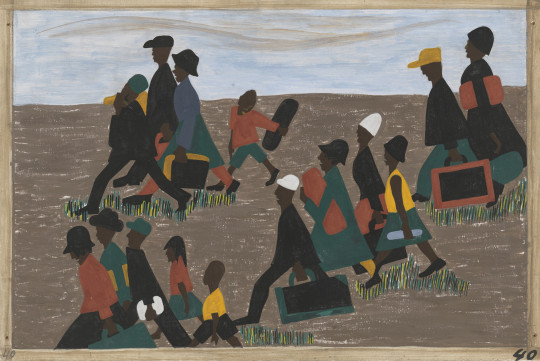
‘The migration gained in momentum’; painting by Jacob Lawrence from his Migration series, 1940–1941. Credit: Museum of Modern Art, New York/© 2017 The Jacob and Gwendolyn Knight Lawrence Foundation, Seattle/Artists Rights Society (ARS), New York.
In the 1940s and 1950s, the NAACP’s Legal Defense Fund (LDF) began what would become a multidecade litigation strategy to challenge the American death penalty—which was used most actively in the South—as racially biased and unconstitutional. It won in Furman v. Georgia in 1972, when the Supreme Court struck down Georgia’s death penalty statute, holding that capital punishment still too closely resembled “self-help, vigilante justice, and lynch law” and “if any basis can be discerned for the selection of these few to be sentenced to die, it is the constitutionally impermissible basis of race.”
Southern opponents of the decision immediately decried it and set to writing new laws authorizing the death penalty. Following Furman, Mississippi Senator James O. Eastland accused the Court of “legislating” and “destroying our system of government,” while Georgia’s white supremacist lieutenant governor, Lester Maddox, called the decision “a license for anarchy, rape, and murder.” In December 1972, Florida became the first state after Furman to enact a new death penalty statute, and within two years, thirty-five states had followed suit. Proponents of Georgia’s new death penalty bill unapologetically borrowed the rhetoric of lynching, insisting, as Maddox put it:
There should be more hangings. Put more nooses on the gallows. We’ve got to make it safe on the street again…. It wouldn’t be too bad to hang some on the court house square, and let those who would plunder and destroy see.
State representative Guy Hill of Atlanta proposed a bill that would require death by hanging to take place “at or near the courthouse in the county in which the crime was committed.” Georgia state representative James H. “Sloppy” Floyd remarked, “If people commit these crimes, they ought to burn.” In 1976, in Gregg v. Georgia, the Supreme Court upheld Georgia’s new statute and thus reinstated the American death penalty, capitulating to the claim that legal executions were needed to prevent vigilante mob violence.
The new death penalty statutes continued to result in racial imbalance, and constitutional challenges persisted. In the 1987 case of McCleskey v. Kemp, the Supreme Court considered statistical evidence demonstrating that Georgia officials were more than four times as likely to impose a death sentence for the killing of a white person than a black person. Accepting the data as accurate, the Court conceded that racial disparities in sentencing “are an inevitable part of our criminal justice system” and upheld Warren McCleskey’s death sentence because he had failed to identify “a constitutionally significant risk of racial bias” in his case.
Today, large racial disparities continue in capital sentencing. African-Americans make up less than 13 percent of the national population, but nearly 42 percent of those currently on death row and 34 percent of those executed since 1976. In 96 percent of states where researchers have examined the relationship between race and the death penalty, results reveal a pattern of discrimination based on the race of the victim, the race of the defendant, or both. Meanwhile, in capital trials today the accused is often the only person of color in the courtroom and illegal racial discrimination in jury selection continues to be widespread. In Houston County, Alabama, prosecutors have excluded 80 percent of qualified African-Americans from serving as jurors in death penalty cases.

More than eight in ten American lynchings between 1889 and 1918 occurred in the South, and more than eight in ten of the more than 1,400 legal executions carried out in this country since 1976 have been in the South, where the legacy of the nation’s embrace of slavery lingers. Today death sentences are disproportionately meted out to African-Americans accused of crimes against white victims; efforts to combat racial bias and create federal protection against it in death penalty cases remain thwarted by the familiar rhetoric of states’ rights. Regional data demonstrate that the modern American death penalty has its origins in racial terror and is, in the words of Bright, the legal scholar, “a direct descendant of lynching.”
In the face of this national ignominy, there is still an astonishing failure to acknowledge, discuss, or address the history of lynching. Many of the communities where lynchings took place have gone to great lengths to erect markers and memorials to the Civil War, to the Confederacy, and to events and incidents in which local power was violently reclaimed by white people. These communities celebrate and honor the architects of racial subordination and political leaders known for their defense of white supremacy. But in these same communities there are very few, if any, significant monuments or memorials that address the history and legacy of the struggle for racial equality and of lynching in particular. Many people who live in these places today have no awareness that race relations in their histories included terror and lynching. As Ifill has argued, the absence of memorials to lynching has deepened the injury to African-Americans and left the rest of the nation ignorant of this central part of our history.
The Civil Rights Act of 1964, arguably the signal legal achievement of the civil rights movement, contained provisions designed to eliminate discrimination in voting, education, and employment, but did not address racial bias in criminal justice. Though it was the most insidious engine of the subordination of black people throughout the era of racial terror and its aftermath, the criminal justice system remains the institution in American life least affected by the civil rights movement. Mass incarceration in America today stands as a continuation of past abuses, still limiting opportunities for our nation’s most vulnerable citizens.
We can’t change our past, but we can acknowledge it and better shape our future. The United States is not the only country with a violent history of oppression. Many nations have been burdened by legacies of racial domination, foreign occupation, or tribal conflict resulting in pervasive human rights abuses or genocide. The commitment to truth and reconciliation in South Africa was critical to that nation’s recovery. Rwanda has embraced transitional justice to heal and move forward. Today in Germany, besides a number of large memorials to the Holocaust, visitors encounter markers and stones at the homes of Jewish families who were taken to the concentration camps. But in America, we barely acknowledge the history and legacy of slavery, we have done nothing to recognize the era of lynching, and only in the last few years have a few monuments to the Confederacy been removed in the South.
The crucial question concerning capital punishment is not whether people deserve to die for the crimes they commit but rather whether we deserve to kill. Given the racial disparities that still exist in this country, we should eliminate the death penalty and expressly identify our history of lynching as a basis for its abolition. Confronting implicit bias in police departments should be seen as essential in twenty-first-century policing.
What threatened to kill me on the streets of Atlanta when I was a young attorney wasn’t just a misguided police officer with a gun, it was the force of America’s history of racial injustice and the presumption of guilt it created. In America, no child should be born with a presumption of guilt, burdened with expectations of failure and dangerousness because of the color of her or his skin or a parent’s poverty. Black people in this nation should be afforded the same protection, safety, and opportunity to thrive as anyone else. But that won’t happen until we look squarely at our history and commit to engaging the past that continues to haunt us.
Bryan Stevenson is the Executive Director of the Equal Justice Initiative and the author of “Just Mercy: A Story of Justice and Redemption.” This essay is drawn from the collection “Policing the Black Man: Arrest, Prosecution, and Imprisonment,” edited and with an introduction by Angela J. Davis, which will be published in July by Pantheon.
#Bryan Stevenson#Black Lives Matter#Just Mercy#Policing in america#atlanta#Black Men#Black Women#Black History Matters#white supremacy#white lies#racial profiling#2023#13th amendment#Black Enslavement in america#The Civil Rights Act of 1964#white lies that kill Black Bodies#systemic racism#jim crow#jim crow laws#Black Codes#Lynching in america#Badges of Slavery
3 notes
·
View notes
Text

I’m so disappointed to live in Arizona rn. Actually the US in general. This isnt my usual posts but why the fuck is this country moving backwards?
Not just in trans rights, but in women’s, indigenous, black ppls, lgbtq in general, even in climate. The Willow project is going to kill any remaining chance at stopping global warming. States are trying to pass laws that could charge AFAB ppl for anything that stops their pregnancy, even miscarriages. Ppl are trying to take away ICWA, which protects children from being taken away from their families. Some are trying to bring back Jim Crow laws.
The sad part is I haven’t even mentioned everything going on in the us bc truth is I dont know. The news doesn’t report all of it. Which leads me to another important thing. The only reason I know about most of this is bc of TikTok, which the government is currently trying to ban. If this works, I and many others will lose access to being able to learn about what is happening in our country.
United States is no longer the land of the free, though it never truly was. American citizens are being treated as ‘others’, and I hate to say it but we are on our way to a genocide. There are so many ppl in power right now who can and will do everything they can to kill these and any other groups they don’t agree with.
Please, if you are a US citizen over 18, fight them. Sign petitions, don’t vote for them, speak out, do as much as you can to help. When I saw help, I mean help ALL of us. We need to stick together, because they are hoping to divide and conquer
It seems those in power have forgotten about separation of Church and state. They don’t care about anyone not in their team, hell, they don’t even care about most of those ppl.
#help#politics#equal rights#protect icwa#jim crow laws#trans rights#the willow project#abortion rights#women’s rights#moving backwards#speak out#lgbtq#transgender#glb important
1 note
·
View note
Text
One of Louisiana's innovations in the annals of systemic racism was the Grandfather Clause:
The Clause set up the idea as a means around the 15th Amendment that people in the South could only vote if they had ancestors who could vote prior to the adoption of the 15th Amendment. Like most of the Jim Crow laws it did not explicitly mandate the inferiority of Black people or the removal of their rights. It was not the laws in themselves that did these things, it was the way the laws were enforced.
#lightdancer comments on history#black history month#nadir of race relations#jim crow laws#grandfather clause#louisiana history
0 notes
Text
Okay I'm riled up about this rn so time for a history of economics lesson (rant) from me, a stranger on the internet
I'm a communist, I hate capitlism, so lemme just put that out there. But capitlism had its moments. Even marx had some praise for parts of capitlism.
And by far the most successful form of capitlism was Keynesian economics, as evident by the enormous increase in living standards in those countries which adopted it between the 1930s and 1970s.
What's Keynesian economics? The idea that capitlism can't survive on its own, and must be supported by government spending at the poorest ends of society and taxes at the richest ends of society (essentially the opposite of trickle down economics) as well as strong regulations on certain industries like banking.
It basically started in 1936 with President Roosevelt who was a personal friend of John Keynes (who the theory is named after).
Roosevelt implemented Keynesian economics to great effect; he raised the top tax rate to 94% (he actually wanted a 100% tax rate on the highest incomes, essentially creating a maximum wage, but the senate negotiated down to 94%) and similarly high corporate tax rates, he created the first ever minimum wage, created the first ever unemployment benefit, created social security in America, pension funds, and increased public spending on things like public utilities and infrastructure, national parks, etc. Which created about 15 million public sector jobs.
This ended the great depression and eventually lead to America winning world War 2, after which many countries followed suit in implementing similar policies, including UK, Australia, and NZ (apologies for the anglosphere-centric list here but they're the countries I'm personally most familiar with so bare with me)
Over the next 40 years these countries had unprecedented growth in living standards and incomes, and either decreasing or stable wealth inequality, and housing prices increasing in line with inflation. Virtually every household bought a car and a TV, rates of higher education increased dramatically, america put a man on the moon, and so on.
Then it all abruptly ended in the 80s and the answer is plain and obvious. 1979 thatcher became UK prime minister. 1981 reagan became US president. 1983 the wage accords were signed in aus. 1984 was the start of rogernomics in NZ (Someone link that Twitter thread of the guy who posts graphs of economic trends and points out where reagan became president)
(Also worth noting those last two in NZ and Aus were both implemented by 'left' leaning governments, but they are both heavily associated with right wing policies.)
This marked the beginning of trickle down economics: tax cuts, privatization of publicly owned assets, reduction in public spending, and deregulation of the finance sector. The top tax rates are down to the low 30s in most of these countries, down from the 80s/90s it was prior. Now THATS a tax cut.
And what happened next?
Wages stagnated. Housing prices skyrocketed. Bankers got away with gambling on the economy. Public infrastruce and utilies degraded. And wealth inequality now exceeds France in 1791.
I don't know how anyone can deny the evidence if they see it, but there's so much propaganda and false information that a lot of people just don't see the evidence.
Literally all the evidence supports going back to Keynesian economics but now that the rich have accumulated so much wealth it's virtually impossible to democratically dethrone them when they have most of the politicians on both the right and the left in their pocket.
Unfortunately it was the great depression and ww2 that gave politicians the political power to implement these policies the first time around. Some thought the 2008 crash would spur movement back towards Keynesianism (which it actually did in Iceland, congrats to them), I hoped covid would force governments to now, but nope.
All these recent crises' seem to have just pushed politics further and further right, with more austerity and tax cuts.
I don't really have a message or statement to end on other than shits fucked yo.
#also this is purely talking about the economics side of things#i know pre-80s the social side of politics was fucked despite the increasing living standards#with jim crow laws ans segregation and countless anti-queer laws etc.#and i know you canr seperate the economy entirely from social aspects of politics#but for the purposes of this post this is about the theoretical implications of different forms of capitlism#thats also why im not mentioning the recent descent towards fascism even tho it is closely tied to the economy#anyway#so yeah ive been reading a lot on economics lately#capitlism#economy#Keynesian economics#communism
5K notes
·
View notes
Text
y'know it's always funny when people start arguing about who was right in civil war bc like. Even with just the movie Tony and the pro-accords crowd has no ideological leg to stand on, the only reason we have to at all root for him is that Bucky killed his parents, but then you throw in Agents of Shield? You throw in everything about that third season leading up to Civil War?
It's kinda painfully obvious that the sokovia accords weren't even *really* about the Avengers, but rather the incident in Lagos was just a convenient excuse to subjugate the growing Inhuman population under the guise of "cracking down on the avengers".
The only people we ever see affected by the sokovia accords are A: members of the Avengers, and B: Inhumans. If you're not an Inhuman or an Avenger, you straight up don't have to register. Spider-Man, Jessica Jones, Luke Cage, all are heroes that exist in the public eye. Sure, Spider-Man hasn't revealed his identity, but he's still known about as a superhero unlike Iron Fist or Cloak and Dagger.
All this to say, simply having powers doesn't mean you have to register, it's only if you're an Inhuman. The sokovia accords specifically, intentionally target Inhumans, and with that in mind there's not even a slight bit of moral ambiguity in Civil War, Tony is just completely clearly in the wrong.
That's not to say Steve gives a fuck about Inhumans either, he never even brings them up in the movie so he clearly doesn't, but he at the very least accidentally stumbled his way into the morally correct position. There's probably some kind of political commentary to be made there, but idk.
Point is, fuck team tony lmao
#marvel#mcu#agents of shield#captain america civil war#team cap#anti tony stark#<- just to be safe#sokovia accords#in the comics Luke Cage compared the registration act to Jim Crow laws#and even though Luke is unaffected by the accords#the comparison still stands
22 notes
·
View notes